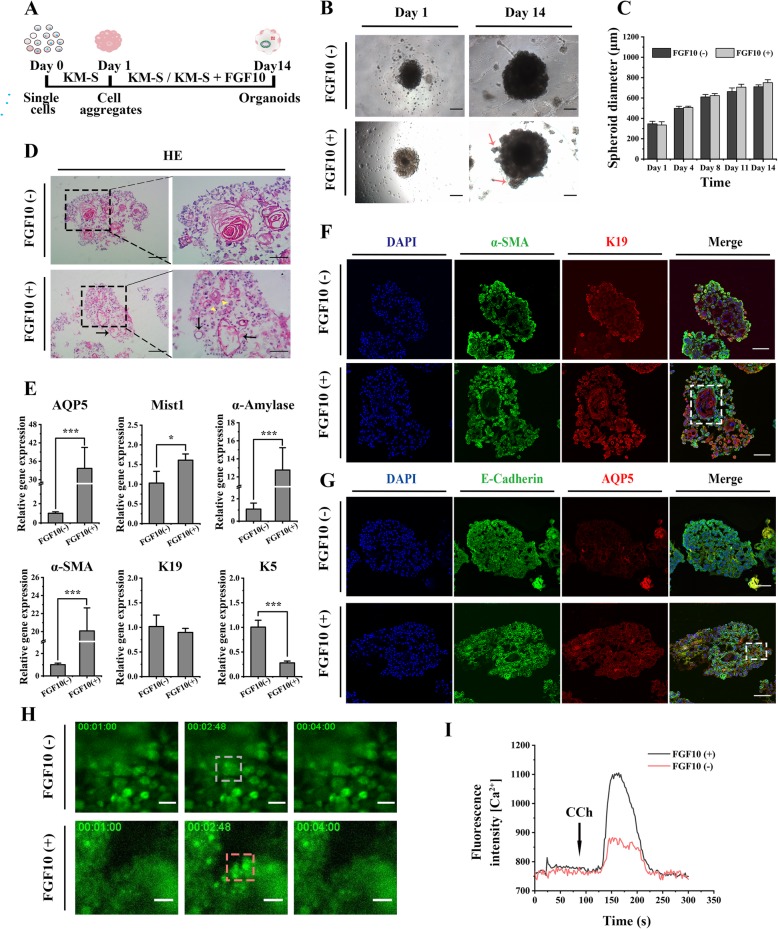Fig. 3.
Development of the hSMGepiS/PC-derived salivary gland organoids with induction of FGF10 in vitro. a Schematic diagram of organoid formation and induction. b Bright-field image of an organoid with emerged buds (red arrows) with FGF10 induction at day 14. Scale bar = 200 μm. c Quantification of sphere size following 3D culture. Error bars, SD, n = 3. d HE staining of organoids at day 14 showing both acinar-like (yellow arrowheads) and ductal-like (black arrows) structures. Scale bar = 200 μm (left), 100 μm (right). e Increased expression of molecular markers of mature salivary glands and decreased expression of a progenitor marker with FGF10 induction by qRT-PCR. Error bars, SD, ***P < 0.01, *P < 0.05, n = 3. f Representative immunofluorescence images of the expression and location of K19 and α-SMA (white rectangle). Scale bar = 100 μm. g Immunofluorescence images of E-cadherin+ and AQP5+ cells in different organoids. White rectangle indicated located AQP5+ cells. Scale bar = 100 μm. h Immunofluorescence images of different organoids before and after the CCh stimulation at 80 s. Scale bar = 50 μm. i Fluorescence intensity of both FGF10-treated and FGF10-untreated organoids after CCh stimulation

